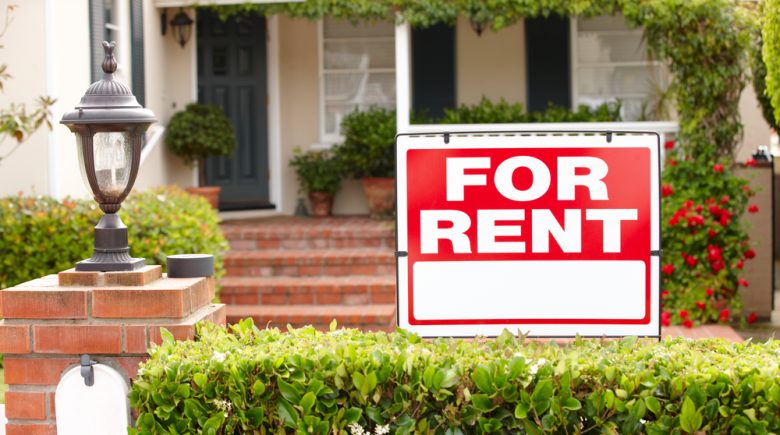Contents
Housing stability—the likelihood of tenants maintaining their homes without financial strain—has become a cornerstone of economic and social policy in recent years. With the American Rescue Plan, a groundbreaking economic stimulus package, fresh pathways have emerged to tackle renters’ mounting challenges. This initiative is nothing short of transformative. It underscores vast potential while exposing the intricate hurdles inherent in addressing such a multifaceted issue.
Understanding Rental Stability
Rental stability hinges on two main approaches: regulation and market forces. Regulatory measures such as rent control and rent stabilization aim to shield tenants by capping price surges and ensuring lease renewals. Rent control fixes prices, whereas rent stabilization allows for controlled increases, often offering greater tenant security. However, landlords contend with reduced profitability and diminished incentives to maintain properties, creating a persistent quandary.
Market-driven approaches, by contrast, can thrust tenants into precarious situations. How can anyone thrive when rent hikes and sudden evictions loom large? This complex landscape is further entangled by a maze of federal, state, and local policies. States like California and Oregon enshrine rent control into law, while others staunchly reject such measures. Enter the American Rescue Plan, introducing a groundbreaking angle: direct financial aid for renters. Its impact has been nothing short of revolutionary.
What is the American Rescue Plan?
Signed into law in 2021 by President Joe Biden, the American Rescue Plan was crafted to ignite economic recovery after the seismic disruptions of the COVID-19 pandemic. Its goal was both ambitious and clear: deliver critical relief to those in dire need. Among its standout provisions, it allocated billions to assist renters grappling with housing costs and utilities. This wasn’t conventional rent control. Instead, it showcased an innovative approach—direct financial assistance that bypassed the traditional pitfalls of price regulation.
The Immediate Impact of the American Rescue Plan
In its inaugural year, the plan threw a lifeline to millions of renters. Billions of dollars flowed into emergency rental assistance programs, averting countless evictions and easing financial hardships. Lives were stabilized, communities fortified. However, inefficiencies clouded its execution. Critics lambasted underutilized COVID-19 relief funds and inequitable distribution across states, leaving some renters in the lurch. Was it perfect? Far from it.
Economists raised red flags. Inflation, a persistent specter, began eroding the relief it provided. According to PolitiFact, the stimulus significantly contributed to post-pandemic inflation. With rising costs, including surging rents, many questioned whether the relief’s benefits outweighed its drawbacks. Could fleeting respite justify such long-term challenges?
Long-Term Effects on Housing Stability
The long-term repercussions of the American Rescue Plan are as intricate as they are unpredictable. While it temporarily curtailed eviction crises, its inflationary ripple effects may have inadvertently pushed rental costs higher, leading to unintended consequences. The housing market’s inherent complexity compounds the issue. High-demand areas like California’s coastline feel relentless pressure. Meanwhile, corporate landlords exacerbate affordability issues, transforming owner-occupied homes into exorbitant rentals.
Inflation’s relentless grip complicates efforts to stabilize rents. Geographic demand, speculative property investments, and shrinking affordable housing stocks all converge to create a perfect storm. Yet, the American Rescue Plan’s lessons remain profound: even short-term relief can harmonize with long-term policy—if executed with care.
Lessons Learned and Future Directions
The American Rescue Plan imparts invaluable lessons for policymakers. Its triumph in delivering immediate relief—billions directed to stabilize renters—illustrates the potent role of financial assistance. Yet, its inflationary legacy serves as a stark cautionary tale. Policymakers must wield such tools with precision and foresight.
Future initiatives must embrace a holistic approach. Expanding affordable housing stock, curbing speculative investments, and fostering equitable market dynamics are non-negotiable. The plan’s mixed outcomes offer a vital roadmap: celebrate its victories, scrutinize its missteps, and craft policies that blend pragmatism with empathy.
Conclusion
The American Rescue Plan redefined housing stability, delivering targeted assistance during one of the most tumultuous periods in modern history. However, its unintended consequences, particularly inflation, underscore the intricate balancing act of economic intervention. As we move forward, the plan’s insights illuminate pathways to a more stable, equitable housing future. Relief and reform must march in tandem, ensuring a brighter horizon for all.
Resources
- “The American Rescue Plan Act of 2021: Policy and Economic Impacts.” Congressional Research Service, 2021.
- “How the American Rescue Plan Affects Renters and Homeowners.” National Low Income Housing Coalition, 2021.
- “Economic Effects of the American Rescue Plan.” PolitiFact, 2022.
Contents
Housing stability—the likelihood of tenants maintaining their homes without financial strain—has become a cornerstone of economic and social policy in recent years. With the American Rescue Plan, a groundbreaking economic stimulus package, fresh pathways have emerged to tackle renters’ mounting challenges. This initiative is nothing short of transformative. It underscores vast potential while exposing the intricate hurdles inherent in addressing such a multifaceted issue.
Understanding Rental Stability
Rental stability hinges on two main approaches: regulation and market forces. Regulatory measures such as rent control and rent stabilization aim to shield tenants by capping price surges and ensuring lease renewals. Rent control fixes prices, whereas rent stabilization allows for controlled increases, often offering greater tenant security. However, landlords contend with reduced profitability and diminished incentives to maintain properties, creating a persistent quandary.
Market-driven approaches, by contrast, can thrust tenants into precarious situations. How can anyone thrive when rent hikes and sudden evictions loom large? This complex landscape is further entangled by a maze of federal, state, and local policies. States like California and Oregon enshrine rent control into law, while others staunchly reject such measures. Enter the American Rescue Plan, introducing a groundbreaking angle: direct financial aid for renters. Its impact has been nothing short of revolutionary.
What is the American Rescue Plan?
Signed into law in 2021 by President Joe Biden, the American Rescue Plan was crafted to ignite economic recovery after the seismic disruptions of the COVID-19 pandemic. Its goal was both ambitious and clear: deliver critical relief to those in dire need. Among its standout provisions, it allocated billions to assist renters grappling with housing costs and utilities. This wasn’t conventional rent control. Instead, it showcased an innovative approach—direct financial assistance that bypassed the traditional pitfalls of price regulation.
The Immediate Impact of the American Rescue Plan
In its inaugural year, the plan threw a lifeline to millions of renters. Billions of dollars flowed into emergency rental assistance programs, averting countless evictions and easing financial hardships. Lives were stabilized, communities fortified. However, inefficiencies clouded its execution. Critics lambasted underutilized COVID-19 relief funds and inequitable distribution across states, leaving some renters in the lurch. Was it perfect? Far from it.
Economists raised red flags. Inflation, a persistent specter, began eroding the relief it provided. According to PolitiFact, the stimulus significantly contributed to post-pandemic inflation. With rising costs, including surging rents, many questioned whether the relief’s benefits outweighed its drawbacks. Could fleeting respite justify such long-term challenges?
Long-Term Effects on Housing Stability
The long-term repercussions of the American Rescue Plan are as intricate as they are unpredictable. While it temporarily curtailed eviction crises, its inflationary ripple effects may have inadvertently pushed rental costs higher, leading to unintended consequences. The housing market’s inherent complexity compounds the issue. High-demand areas like California’s coastline feel relentless pressure. Meanwhile, corporate landlords exacerbate affordability issues, transforming owner-occupied homes into exorbitant rentals.
Inflation’s relentless grip complicates efforts to stabilize rents. Geographic demand, speculative property investments, and shrinking affordable housing stocks all converge to create a perfect storm. Yet, the American Rescue Plan’s lessons remain profound: even short-term relief can harmonize with long-term policy—if executed with care.
Lessons Learned and Future Directions
The American Rescue Plan imparts invaluable lessons for policymakers. Its triumph in delivering immediate relief—billions directed to stabilize renters—illustrates the potent role of financial assistance. Yet, its inflationary legacy serves as a stark cautionary tale. Policymakers must wield such tools with precision and foresight.
Future initiatives must embrace a holistic approach. Expanding affordable housing stock, curbing speculative investments, and fostering equitable market dynamics are non-negotiable. The plan’s mixed outcomes offer a vital roadmap: celebrate its victories, scrutinize its missteps, and craft policies that blend pragmatism with empathy.
Conclusion
The American Rescue Plan redefined housing stability, delivering targeted assistance during one of the most tumultuous periods in modern history. However, its unintended consequences, particularly inflation, underscore the intricate balancing act of economic intervention. As we move forward, the plan’s insights illuminate pathways to a more stable, equitable housing future. Relief and reform must march in tandem, ensuring a brighter horizon for all.
Resources
- “The American Rescue Plan Act of 2021: Policy and Economic Impacts.” Congressional Research Service, 2021.
- “How the American Rescue Plan Affects Renters and Homeowners.” National Low Income Housing Coalition, 2021.
- “Economic Effects of the American Rescue Plan.” PolitiFact, 2022.






